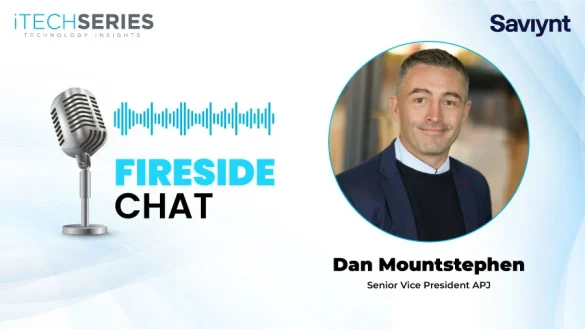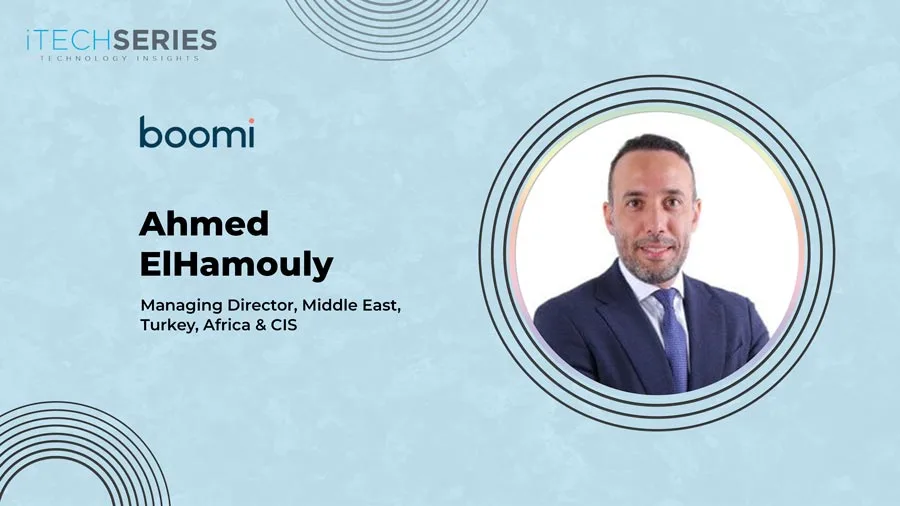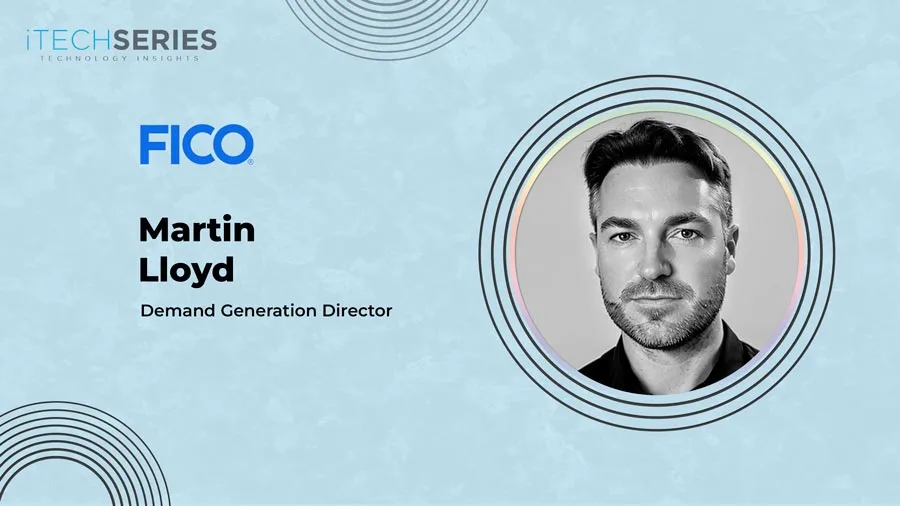Ritu Rungta, Head of Marketing at Black Box, with 20 years of experience, shares her journey from storytelling and brand building to driving revenue influence and strategic repositioning. She discusses balancing global strategy with local relevance, leveraging AI and data-driven insights, fostering team alignment, and positioning marketing as a growth engine that delivers measurable business impact.
Welcome to the interview series, Ritu. Could you tell us more about yourself and your journey?
My journey has spanned consulting, founder-led, PE-owned, and now a public listed global enterprise environment, and each phase taught me that marketing leadership is about adapting your playbook, not just scaling it. In founder-driven setups, it’s about storytelling and momentum. In PE-backed environments, it’s about velocity and measurable impact. In listed organizations, it becomes a balance of brand visibility, stakeholder confidence, and regulated market presence.
I view marketing as a triple-impact function-driving revenue influence, building reputation equity, and strengthening relationships across customers, analysts, media, and even internal teams. And while I strongly believe data and outcomes should speak for the function, I’ve also learned that there are moments where marketing must take the stage, articulate the narrative, and represent its strategic value, esp. where perception drives decisions.
Tech itself is a dynamic industry, and marketing inside tech is even more dynamic, now accelerated further by the AI shift that is resetting how content, experiences, and engagement are built. To stay ahead, I’ve always practiced two-way leadership—mentoring teams on strategic thinking while being open to reverse learning, including from younger talent on new tools, digital behaviours, and AI-enabled possibilities.
For me, leadership in marketing is about doing the work, letting the work speak—and knowing exactly when to step up and speak for the work.
How can marketers balance global brand alignment with regional market nuances while staying locally relevant?
Having led marketing narratives in multi-geography setups, I’ve seen firsthand that global alignment and local relevance are not opposing forces but two sides of strategic impact. The mistake many organizations make is assuming that a strong global brand story will automatically translate into regional traction. It doesn’t.
Just like different personas respond to different metrics-a CIO looks at risk mitigation while a CFO watches ROI-regions also respond to different value triggers. Ignoring that is not just a message mismatch; it’s a lost opportunity for market resonance and pipeline influence.
My approach has always been to define a strong, non-negotiable global positioning, the core value and market identity of the brand, and then enable regions with flexible narrative frameworks so they can speak the language of their buyers. For example, while in the US the conversation around digital infrastructure is driven by efficiency and innovation, in India, it gains more traction when anchored around speed, scale, and service agility.
This is where data-led listening becomes powerful. A mature marketing function knows when to standardize and when to localize. And the role of a marketing leader is to orchestrate this balance with clarity, not control.
Where have you seen the biggest shifts in marketing’s role with closer alignment to revenue functions?
The most meaningful shift I’ve experienced is the recognition that marketing can actively shape and accelerate revenue. Earlier, marketing operated in a later stage sales cycle, creating collateral after conversations had already begun. Today, marketing has moved upstream into the deal cycle, influencing how opportunities are created, positioned, and prioritized. There are three core areas where this shift is visible:
- Direct Revenue Influence – We moved beyond lead-generation volume and redefined our success metrics around deal influence, opportunity velocity, and strategic account Marketing started contributing to account intelligence, narrative shaping for pursuits, and positioning in analyst/sales briefings, which directly impacted win ratios.
- Indirect Revenue Acceleration via Brand & Media Credibility – In a listed environment, market visibility builds trust before a sales conversation even Strategic media positioning, thought leadership, and analyst engagement help open doors faster and reduce the need for heavy persuasion in early-stage discussions.
- Strategic Alignment with Growth Priorities – Instead of running campaigns in isolation, marketing now works alongside sales, delivery, practices, and leadership to identify growth zones and align narrative to business bets, whether in cloud services, cybersecurity, or digital
This shift is marked by one fundamental mindset change where marketing stops being reactive and becomes a growth function with decision-making influence.
How are you leveraging AI and data-driven insights to enhance marketing efficiency and drive better results?
Marketing has been evolving from a feeling-driven function to a data-informed one for quite some time, thanks to automation and CRM intelligence. But with AI, we’ve entered a phase where marketing impact is real-time and compounding, from monthly dashboards to almost real-time course-correction, helping marketing move in parallel with sales, not behind it. As I have seen, AI and data-led interventions have driven three visible shifts:
- From Demand Capture to Deal Influence: With AI-led engagement scoring and account intelligence, we started focusing on high-intent signals rather than just lead volume. In one cycle, this helped us reduce low-value lead handovers by nearly 30% while improving sales-qualified conversation rates, proving that quality-led influence is more valuable than funnel width.
- Brand Positioning as a Revenue Lever, Not Just a Visibility Play: Strong media positioning and analyst alignment, earlier seen as brand exercises, are now tied to influence metrics. In fact, accounts with prior brand exposure or media touchpoints entered sales cycles faster and showed lower friction in the evaluation stage, a clear indicator that perception reduces sales resistance. For listed environments, consistent brand visibility can even correlate with improved analyst mention frequency and stakeholder sentiment tracking, indirectly influencing valuation confidence.
- Operational Differentiation Through Smart Execution: Today, tools can automate production, analytics, and reporting—levelling the operational playing field. Experience still matters, but the application of that experience through insight-led execution becomes the real competitive edge.
“Marketing sits at the intersection of business strategy, customer understanding, and human behaviour, so success comes from developing strength in all three areas.”
Could you tell us about your most challenging yet rewarding marketing initiative and what made it a defining experience?
One of the most defining initiatives I led was a repositioning exercise in a market where competitive messaging had become almost indistinguishable; everyone claimed “innovation,” “customer focus,” and “digital transformation,” resulting in no real differentiation. The challenge was to shift perception in a space where the narrative was already saturated.
Instead of rushing into campaigns, we started with deep market intelligence and behavioural insight analysis. I have always believed that market understanding is strategic activation, and is operational. So before selecting channels or formats, we mapped areas of messaging fatigue versus high-receptivity zones. This helped us choose platforms not just for reach, but for influence and perception shaping.
Through structured internal collaboration, we aligned stakeholders on a unified narrative framework. In parallel, we orchestrated external momentum through industry partnerships, earned media, and thought-led positioning released with deliberate timing to build credibility before amplification. As a result, within two quarters:
- Media feature quality improved by over 40%, moving positioning from generic mentions to strategic editorial interest.
- Nearly a quarter of new enterprise conversations began referencing our positioning themes unprompted, indicating that the narrative was resonating at decision-making levels.
- Deal-stage progression velocity improved, reinforcing that perception directly elevated pipeline quality, not just lead volume.
We intentionally took bolder positioning risks, which naturally triggered mixed early reactions. And that’s where marketing leadership is tested. It’s easy to be swayed by immediate sentiment, but true impact comes from knowing when to hold, when to amplify, and when to pivot, a judgment that no tool or AI can simulate. It comes from proximity to the market and conviction built through informed insight.
This initiative reaffirmed that impactful marketing is about courageous positioning, precise timing, and the ability to drive narrative change that influences revenue outcomes, not just brand visibility.
How do you leverage storytelling to foster deeper audience connections and boost engagement across campaigns?
For me, effective marketing is human at its core. No matter how sophisticated the tools or data, decisions are ultimately made by people with intellect, experience, and emotion. Storytelling bridges the gap between technical solutions and human relevance.
I’ve applied this principle across all aspects of marketing, from campaigns to sales enablement, media positioning, and analyst engagement. For example, when launching cloud services, we shared real scenarios showing how customers solved critical business challenges, unlocked efficiencies, and built lasting value. This human-centric approach resulted in more consultative conversations with prospects, deeper engagement with partners, and stronger analyst recognition.
I also emphasize credibility and trust. Storytelling isn’t about embellishing results; it’s about ensuring that “value-add” is reflected in the organization’s ethos, not just in marketing collateral. That consistency builds long-term partnerships and authentic relationships, which ultimately drive both brand and revenue impact.
Finally, tools and automation amplify reach, but the decision to engage, trust, or buy still rests with people. Marketing’s role is to craft, convey, and reinforce stories that speak to both rational business outcomes and human belief, turning campaigns into meaningful connections that last.
How do you keep your team consistently aligned with marketing goals and motivated to achieve them?
Alignment and motivation start with clarity, trust, and purpose. I translate strategic business goals into marketing objectives that the team can see, measure, and own, from pipeline influence to brand positioning and media impact. The team should feel empowered and aligned, reflecting confidence in both direction and decision-making freedom.
I emphasize the bigger picture over task allocation, ensuring everyone understands not just what to do, but why it matters to business outcomes. Within this framework, I intentionally allow room to take calculated risks, recognizing that some initiatives demand zero tolerance for error, while others are opportunities to experiment and learn. Genuine mistakes with the right intent are treated as learning moments. Equally important is respecting individual perspectives and aspirations. Success for one team member may look different from that for another. A leader’s role is to recognize these differences, support growth in each person’s context, and align it with the functions and the company’s objectives. This respect strengthens engagement and ensures the team contributes meaningfully to organizational impact.
Leadership is ultimately about balancing company priorities, team objectives, and individual growth. I’ve always applied this hierarchy: company first, then team, then individual, which fosters a culture where people feel valued, empowered, and motivated, and the function grows in influence and effectiveness across the organization.
What advice would you give aspiring marketers who are looking to build a successful career?
I often tell aspiring marketers that building a successful career is less about executing campaigns and more about owning impact and perspective. Marketing sits at the intersection of business strategy, customer understanding, and human behaviour, so success comes from developing strength in all three areas. A few principles I emphasize:
- Think strategically, act with business impact – Understand the company’s goals and how your marketing decisions influence revenue, perception, and stakeholder confidence. Don’t just focus on activity metrics; ask, “Does this move the business forward?”
- Leverage data, but trust judgment – Tools and AI amplify reach and efficiency, but human insight, market intuition, and judgment remain irreplaceable. Learning when to rely on data and when to trust your experience is a key differentiator.
- Respect diversity of thought and approach – Every person is different, and success may mean something different to A strong marketer learns to adapt, collaborate, and align diverse perspectives to achieve functional and organizational impact.
- Take risks, fail smartly, and learn quickly – Some decisions demand precision; others allow Genuine mistakes with the right intent are learning opportunities.
- Build credibility and long-term relationships – Marketing is human-centric: people sell to people; people buy from people. Ensure that your work, messaging, and relationships reflect authenticity, value, and trust, not just short-term gains.
- Persevere and stay principled – As a woman in business, I acknowledge that there are challenges that exist. Hard work, perseverance, and doing the right thing, even when immediate returns aren’t visible, matter more than shortcuts or appearances. Taking on the difficult project is not a road to failure, even when you fail, but a path to immense and irreplaceable At the end of the day, there’s a unique satisfaction in knowing you’ve done the right thing and not just being told you did.
I tell aspiring marketers to think like business leaders. Marketing is about real impact, shaping perception, driving revenue, and building trust. Combining strategic insight, disciplined execution, and human understanding grounded in real experience makes you indispensable.
About Ritu Rungta
Ritu Rungta is an accomplished marketing leader with nearly 20 years of B2B experience across IT services, product engineering, and digital infrastructure. She specializes in Strategy, GTM, digital marketing, brand transformation, demand generation, media positioning, and partner ecosystem marketing. With a proven track record of aligning marketing with business growth, Ritu leverages AI and MarTech, shapes global narratives with local relevance, and builds high-performance teams, earning recognition in B2B social media and thought leadership awards.











